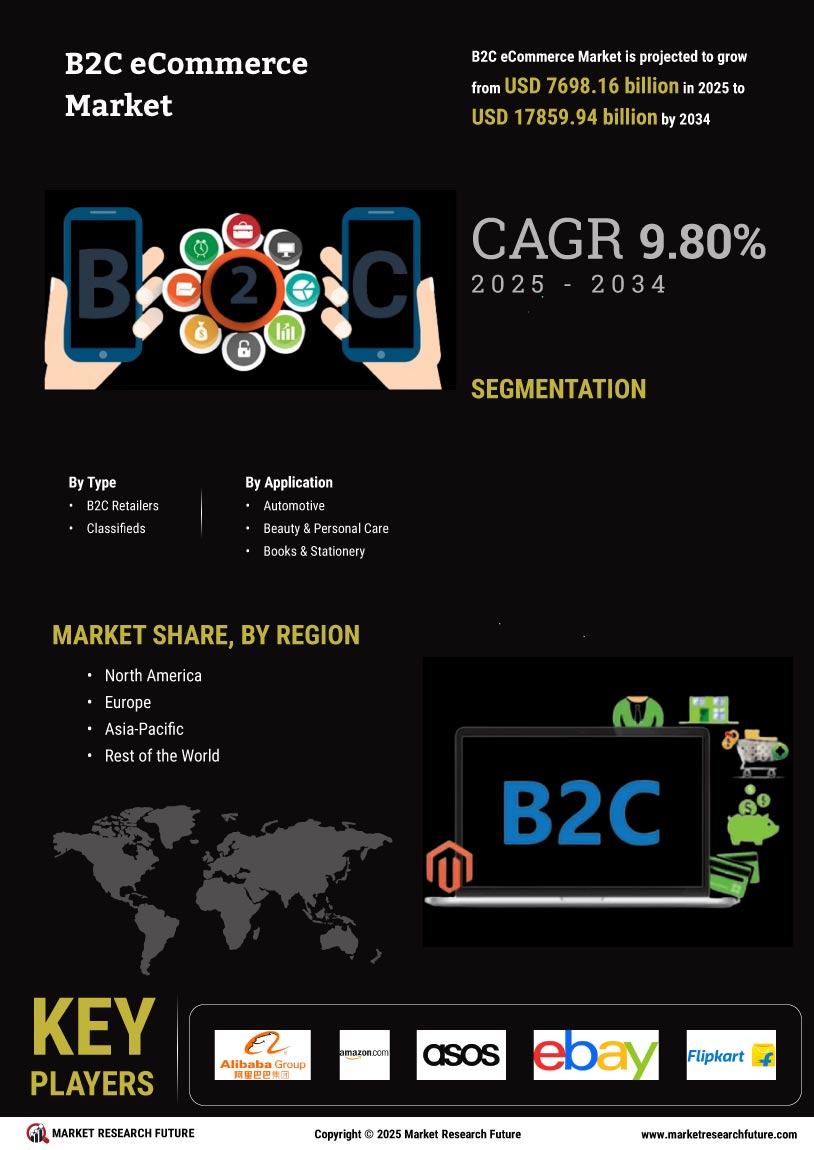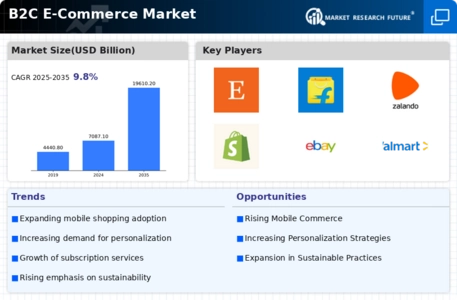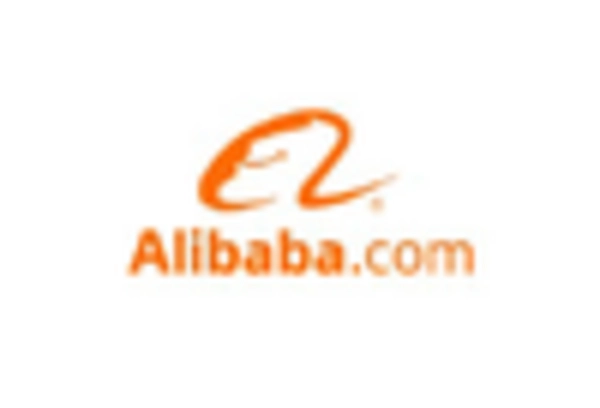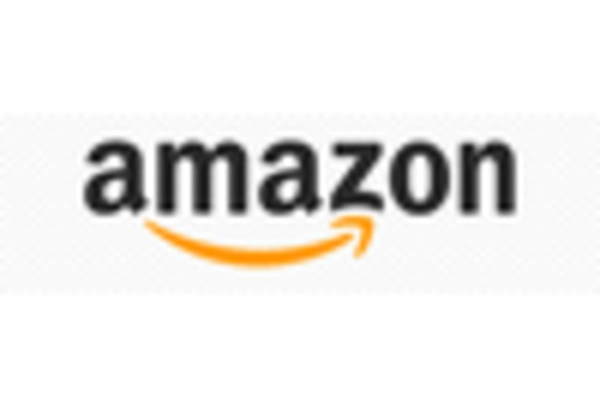Social Media Influence
The influence of social media on the B2C E-Commerce Market cannot be overstated. Platforms such as Instagram, Facebook, and TikTok have become vital channels for brands to engage with consumers. Recent studies indicate that nearly 54% of social media users utilize these platforms to research products before making a purchase. This trend highlights the importance of social media marketing strategies in driving sales and brand awareness. Brands that effectively leverage social media to showcase their products and engage with their audience are likely to see increased conversion rates in the B2C E-Commerce Market. The integration of social commerce features further enhances this dynamic, allowing for seamless shopping experiences.
Global Payment Solutions
The B2C E-Commerce Market is significantly influenced by the evolution of payment solutions. The rise of digital wallets, cryptocurrencies, and buy-now-pay-later options has transformed how consumers transact online. Recent data suggests that over 60% of consumers prefer using digital payment methods for their online purchases, citing security and convenience as primary factors. This shift necessitates that businesses adopt diverse payment options to cater to a broader audience. Companies that fail to provide flexible payment solutions may find themselves at a disadvantage in the competitive landscape of the B2C E-Commerce Market. As payment technologies continue to evolve, staying ahead of these trends is crucial for success.
Changing Consumer Behavior
The B2C E-Commerce Market is witnessing a notable shift in consumer behavior, driven by the increasing demand for convenience and speed. Consumers are now more inclined to shop online due to the ease of access and the ability to compare prices effortlessly. Recent statistics reveal that approximately 80% of consumers prefer online shopping over traditional retail, primarily due to the time-saving aspect. This behavioral change suggests that businesses must adapt their strategies to cater to the evolving preferences of consumers. As a result, companies that prioritize user-friendly interfaces and efficient delivery systems are likely to thrive in the B2C E-Commerce Market.
Technological Advancements
The B2C E-Commerce Market is currently experiencing a surge in technological advancements that enhance online shopping experiences. Innovations such as artificial intelligence, augmented reality, and machine learning are transforming how consumers interact with brands. For instance, AI-driven chatbots provide real-time customer support, while augmented reality allows customers to visualize products in their own environment before making a purchase. According to recent data, nearly 70% of consumers express a preference for brands that utilize advanced technology to improve their shopping experience. This trend indicates that businesses that invest in technology are likely to gain a competitive edge in the B2C E-Commerce Market.
Logistics and Supply Chain Innovations
Innovations in logistics and supply chain management are reshaping the B2C E-Commerce Market. The demand for faster delivery times and efficient order fulfillment has prompted companies to invest in advanced logistics solutions. Recent reports indicate that nearly 75% of consumers expect their online orders to arrive within two days. This expectation drives businesses to optimize their supply chains and explore partnerships with logistics providers. Companies that successfully implement innovative logistics strategies, such as automated warehousing and real-time tracking, are likely to enhance customer satisfaction and loyalty in the B2C E-Commerce Market. As competition intensifies, the ability to deliver products swiftly and reliably will be a key differentiator.


















Leave a Comment